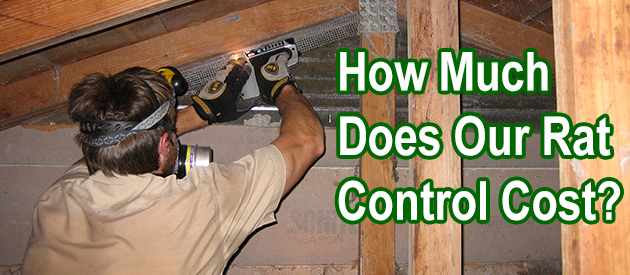Leon County, Tallahassee Rat Control Situation:
Aloha David, We are just moving to Tallahassee but own a home in Honolulu. I am writing you because there are no rodent removal companies on Oahu and I don't have anyone I can get help or advice from. We recently discovered rodent droppings in our atticat the Honolulu home. After checking the roof, eaves, etc., we found the potential entry point into the attic. It is an existing vent opening that a contractor used for installation of a hot water heater pipe that was fed into the attic. (see photo) We sealed the opening with galvanized sheeting, screwed in place, caulked and painted. The opening was sealed off September 14,2012. Subsequently, we set snap and electronic traps in the attic. The morning after the first traps were set, we caught one rat in the rat zapper. None in the snap traps. The fifth day we caught another rat in the zapper. After several days of no more trappings, we completely vacuumed the attic space with a hepa vacuum. Feeling like there were no more rats in the attic, We removed the traps. We have been checking the attic everyday since the last rat was killed, on September 21,2012 and there have been no droppings... ...until this morning when my husband checked the attic. He found one rodent pellet on a beam about a foot from the attic access panel and several more maybe six feet or so from the opening. My question is twofold: 1) is it possible for a roof rat(s) to live in an attic space for an extended period of time without access to water (over 3 weeks), and 2) wouldn't we see more than 3 rat turds if there is current activity in the attic? I really would appreciate any advice or insights you can provide. I am so fearful of rodents and will have to return to Honolulu in less than a week to take care of the house while my husband returns to work here in Florida. If you feel so inclined, you can also reach me on my cell phone. Mahalo, Frances
Tallahassee Rat Control Tip of The Week
Should I Remove Rats Myself, Or Hire A Pro?
Disposing of rats is something you need to do, however the question is how you can achieve this. You can do this without the help of anybody; however, some would want to employ an expert. So which is the most ideal route to choose?
Let's take a look at the things to consider.
If you are certain that it is only one rat, then there is just one reason to hire an expert unless the rat appears to be sick. If you can't tell if the rat is sick, there are signs to check for and you should get familiar with these. Otherwise, it is just an issue of getting a trap, setting it up, and trusting that the rat will get captured.
There are traps that permit you to kill the rat right away and there are those that will basically trap the rat alive. If you select the ones that kill the rat, when it is dead, just toss it out and your problem is solved. However, if you decide to catch it live, take it to an area where it can't go back into your home and let it go. Ensure you wear gloves when dealing with the rat, regardless of which trap you pick.
If you find that there is more than one rat in your home, then it might be an ideal option to hire an expert. You might not have the necessary skills, time, and expertise to catch multiple rats. Rats are creatures that like to live in huge groups, so you will find that there can be thousands living in one area.
If you notice a spot in your home where they are living, then it is a smart thought to get an expert to come and take care of them. They won't just end the rat infestation in your home, but will likewise dispose of the vermin. This will keep you from having to deal with the problem at all.


